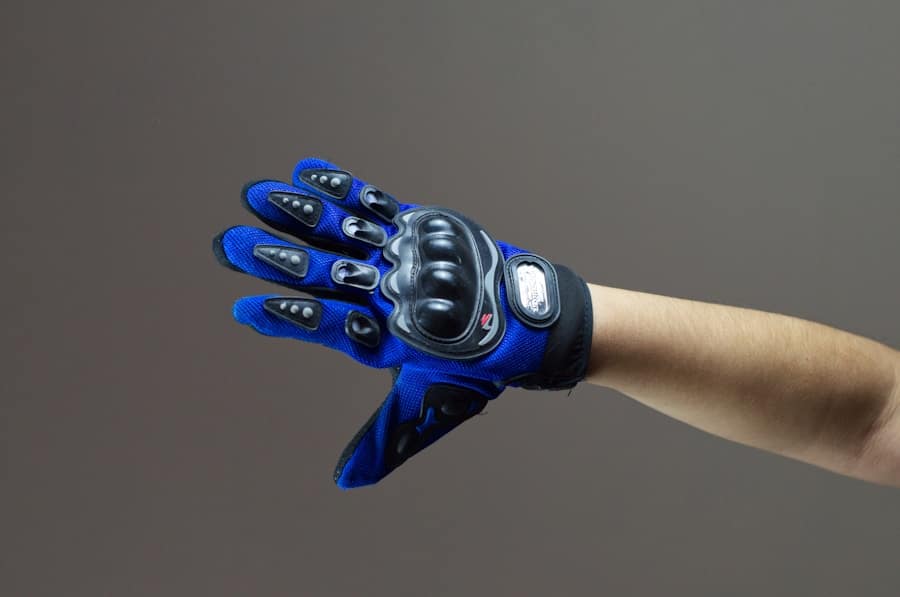Smart fluids, also known as intelligent fluids or responsive fluids, represent a fascinating intersection of materials science and engineering. These fluids possess the unique ability to change their properties in response to external stimuli such as magnetic fields, electric fields, temperature variations, or shear stress. The concept of smart fluids has gained significant traction in recent years, particularly in the context of adaptive technologies that require materials capable of dynamic response.
The versatility of smart fluids makes them suitable for a wide range of applications, from automotive systems to biomedical devices, and increasingly, in wearable technologies. The development of smart fluids is rooted in the principles of rheology and material science. These fluids can be broadly categorized into several types, including magnetorheological (MR) fluids, electrorheological (ER) fluids, and thermorheological fluids.
Each type exhibits distinct behaviors under specific conditions, allowing for tailored applications. For instance, MR fluids become more viscous when exposed to a magnetic field, while ER fluids respond to electric fields. This adaptability opens up new avenues for innovation, particularly in the realm of wearable technologies that demand flexibility and responsiveness to user needs.
Key Takeaways
- Smart fluids are materials that change their properties in response to external stimuli, such as electric or magnetic fields, temperature, or stress.
- These fluids have unique characteristics, including the ability to change viscosity, flow behavior, and shape, making them ideal for use in adaptive wearable technologies.
- Smart fluids are being used in adaptive wearable technologies for applications such as impact protection, temperature regulation, and comfort enhancement.
- The use of smart fluids in wearable technologies offers advantages such as improved performance, enhanced comfort, and increased safety for users.
- Despite their potential benefits, smart fluids also present challenges and limitations, including cost, durability, and integration with existing wearable technologies.
Properties and Characteristics of Smart Fluids
Rheological Measurements
This property is often quantified through rheological measurements, which assess how a fluid’s viscosity changes with applied stress or field strength. For example, magnetorheological fluids can transition from a free-flowing state to a semi-solid state almost instantaneously when exposed to a magnetic field.
Response Time and Tunability
This rapid response time is crucial for applications requiring immediate adjustments, such as in active suspension systems in vehicles or in protective gear. Another important property of smart fluids is their tunability. The composition of these fluids can be engineered to achieve specific responses based on the intended application.
Optimizing Performance
For instance, the addition of various additives or nanoparticles can enhance the performance of MR or ER fluids, allowing for greater control over their behavior. This tunability extends beyond just viscosity; it can also influence other characteristics such as thermal conductivity and stability under varying environmental conditions. As a result, researchers are continually exploring new formulations and combinations to optimize the performance of smart fluids for diverse applications.
Applications of Smart Fluids in Adaptive Wearable Technologies
The integration of smart fluids into wearable technologies has opened up exciting possibilities for enhancing user experience and functionality. One prominent application is in the development of adaptive clothing that can adjust its thermal properties based on environmental conditions or user activity levels. For instance, garments embedded with thermorheological fluids can change their insulation properties in response to temperature fluctuations, providing optimal comfort for the wearer.
This capability is particularly beneficial for outdoor enthusiasts or athletes who require clothing that adapts to varying weather conditions. Another innovative application lies in the realm of health monitoring and rehabilitation. Wearable devices equipped with smart fluids can provide real-time feedback on muscle activity or joint movement by adjusting their stiffness or support based on user needs.
For example, a smart brace that utilizes MR fluid technology can stiffen when excessive force is applied, offering enhanced support during physical activities while remaining flexible during rest periods. This adaptability not only improves comfort but also aids in injury prevention and recovery.
Advantages of Using Smart Fluids in Wearable Technologies
The incorporation of smart fluids into wearable technologies offers several distinct advantages that enhance both functionality and user experience. One of the primary benefits is the ability to create responsive systems that can adapt to changing conditions in real-time. This responsiveness allows for a more personalized experience, as wearables can adjust their properties based on individual user needs or environmental factors.
For instance, a smart jacket could automatically regulate its insulation level based on the wearer’s body temperature and external weather conditions, ensuring optimal comfort throughout the day.
Traditional mechanical systems often require bulky components to achieve similar levels of adaptability; however, smart fluids can provide significant functionality within a compact form factor.
This reduction in size not only enhances the aesthetic appeal of wearable technologies but also increases their practicality for everyday use. Additionally, the lightweight nature of smart fluid systems can improve overall comfort for users, making them more likely to wear these devices consistently.
Challenges and Limitations of Smart Fluids in Wearable Technologies
Despite their promising potential, the integration of smart fluids into wearable technologies is not without challenges. One significant limitation is the need for precise control mechanisms to activate and regulate the fluid’s properties effectively. For instance, ensuring that an MR fluid responds accurately to varying magnetic field strengths requires sophisticated sensors and control algorithms.
The complexity of these systems can increase manufacturing costs and complicate the design process, potentially hindering widespread adoption. Another challenge lies in the long-term stability and durability of smart fluids within wearable applications. Many smart fluids are sensitive to environmental factors such as temperature and humidity, which can affect their performance over time.
Additionally, wearables are often subjected to mechanical stresses from regular use, which could lead to degradation or failure of the fluid’s properties. Researchers are actively investigating ways to enhance the stability and longevity of smart fluids through improved formulations and protective coatings, but these efforts are still ongoing.
Future Developments and Innovations in Smart Fluids for Wearable Technologies
The future of smart fluids in wearable technologies is poised for significant advancements as research continues to evolve in this field. One promising direction involves the exploration of new materials and composites that enhance the performance characteristics of smart fluids. For example, incorporating nanomaterials such as graphene or carbon nanotubes could improve the responsiveness and durability of these fluids while also providing additional functionalities like enhanced thermal conductivity or electrical properties.
Moreover, advancements in sensor technology and data analytics are expected to play a crucial role in optimizing the use of smart fluids in wearables. The integration of advanced sensors capable of monitoring physiological parameters in real-time will enable more precise control over fluid behavior based on user needs. This synergy between smart fluids and sensor technology could lead to highly adaptive wearables that not only respond to environmental changes but also anticipate user requirements based on historical data patterns.
Case Studies of Smart Fluids in Adaptive Wearable Technologies
Several case studies illustrate the practical applications and benefits of smart fluids in adaptive wearable technologies. One notable example is the development of a smart exoskeleton designed for rehabilitation purposes that utilizes MR fluid technology. This exoskeleton can adjust its stiffness dynamically based on the user’s movements and exertion levels, providing tailored support during rehabilitation exercises.
Clinical trials have shown that patients using this adaptive device experience improved mobility and reduced recovery times compared to traditional rehabilitation methods.
These garments are designed to regulate body temperature by adjusting their thermal insulation properties based on real-time temperature readings from embedded sensors.
Athletes wearing this adaptive sportswear reported enhanced comfort during training sessions, as the clothing effectively managed sweat evaporation and body heat retention.
Conclusion and Implications for the Future of Smart Fluids in Wearable Technologies
The exploration of smart fluids within wearable technologies presents a transformative opportunity for enhancing user experience across various domains, from sports and fitness to healthcare and everyday comfort. As research continues to advance, we can expect further innovations that will refine the properties and applications of these intelligent materials. The potential for creating highly adaptive systems that respond seamlessly to user needs will likely drive increased interest from both consumers and manufacturers alike.
In summary, while challenges remain regarding stability and control mechanisms, ongoing developments in material science and sensor technology hold promise for overcoming these hurdles. The future landscape of wearable technologies will likely be characterized by an increasing reliance on smart fluids, leading to more personalized, efficient, and responsive devices that cater to individual preferences and requirements. As we move forward into this new era of adaptive technology, the implications for health monitoring, athletic performance enhancement, and everyday convenience are profound, paving the way for a more integrated relationship between humans and their wearable devices.
In a recent article discussing the advancements in wearable technologies, one can also explore the best laptops for kids in 2023. These devices play a crucial role in education and entertainment for children, making them an essential tool in today’s digital age. To learn more about the top options available, check out this article along with the innovative uses of smart fluids in adaptive wearable technologies.
FAQs
What are smart fluids?
Smart fluids are materials that can change their properties in response to external stimuli, such as electric or magnetic fields, temperature, or mechanical stress. These materials can exhibit reversible changes in viscosity, flow behavior, or other physical properties.
How are smart fluids used in adaptive wearable technologies?
Smart fluids can be integrated into wearable technologies to create adaptive systems that can respond to changes in the wearer’s environment or body. For example, smart fluids can be used in clothing to provide thermal regulation, impact protection, or enhanced comfort.
What are some examples of adaptive wearable technologies using smart fluids?
Examples of adaptive wearable technologies using smart fluids include self-adjusting padding in sports equipment, temperature-regulating clothing for outdoor activities, and pressure-sensing insoles for footwear.
What are the benefits of using smart fluids in adaptive wearable technologies?
The use of smart fluids in adaptive wearable technologies can provide benefits such as improved comfort, enhanced performance, and increased safety for the wearer. These materials can also enable the development of more versatile and functional wearable devices.
Are there any limitations or challenges associated with using smart fluids in adaptive wearable technologies?
Some limitations and challenges associated with using smart fluids in adaptive wearable technologies include the need for reliable and durable integration methods, as well as potential cost and manufacturing complexities. Additionally, the performance of smart fluids may be influenced by environmental conditions and long-term durability.



